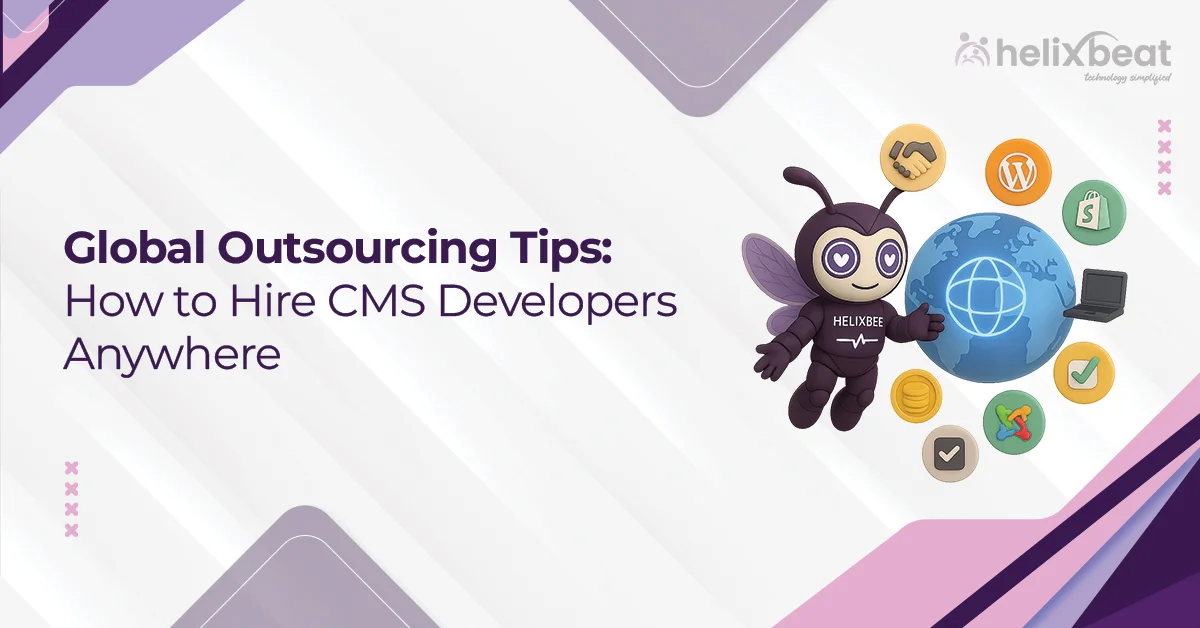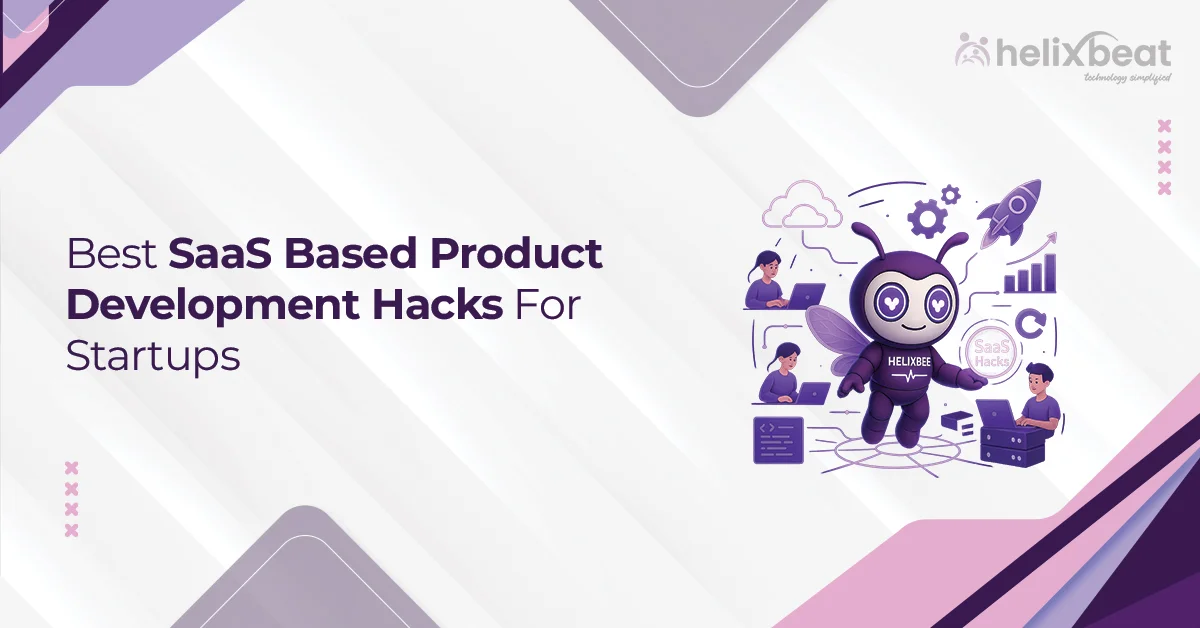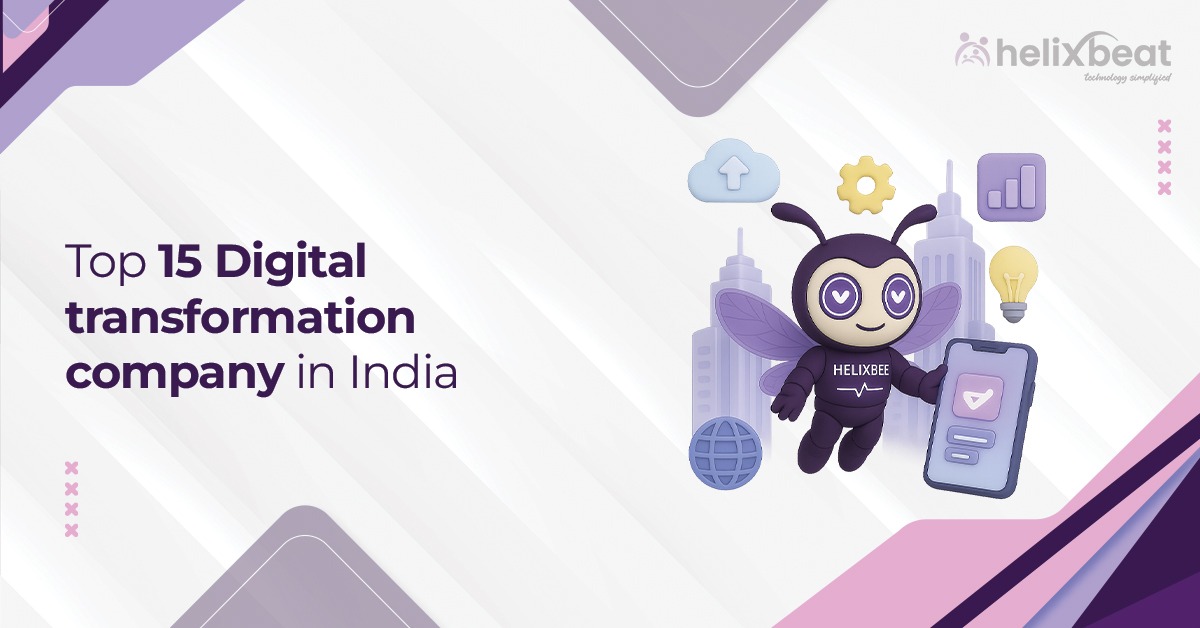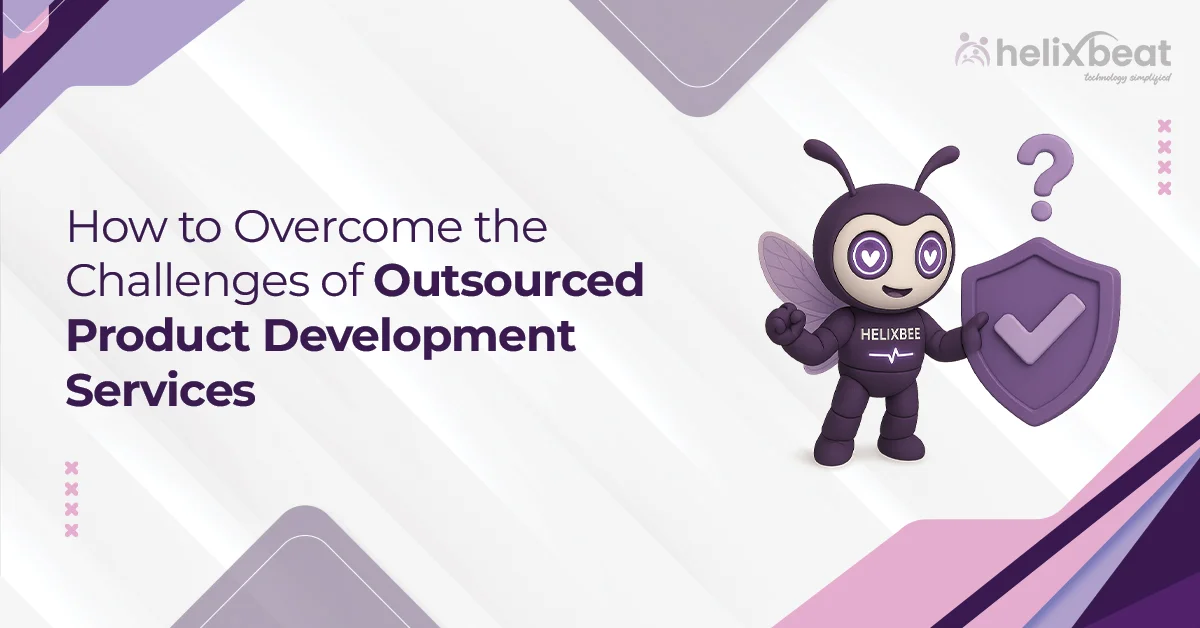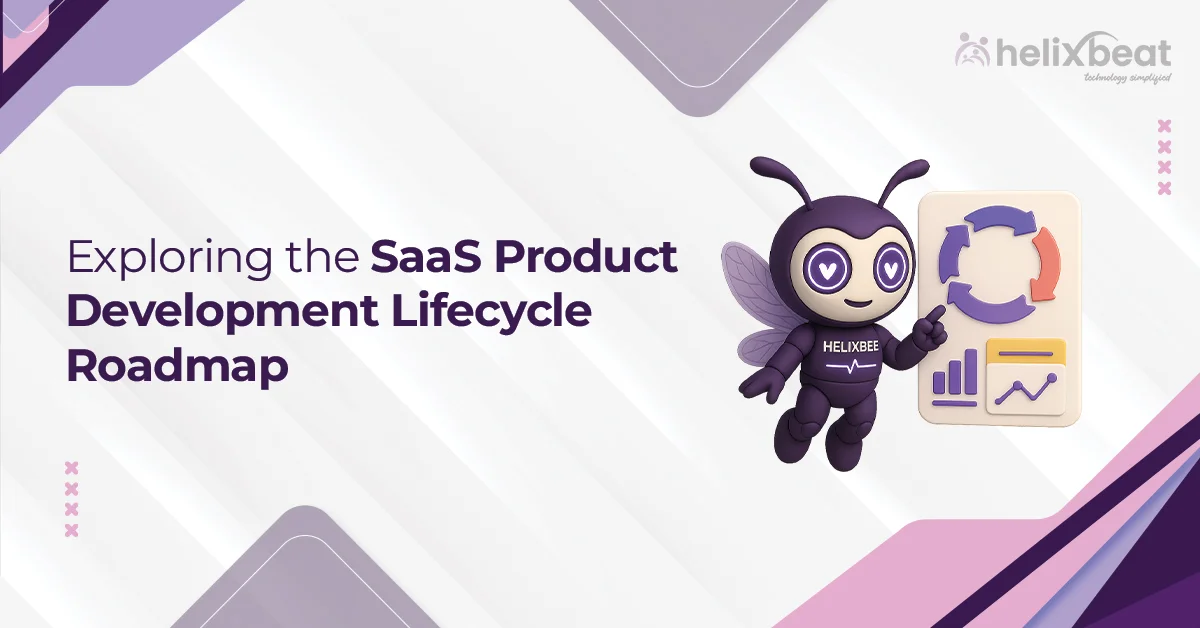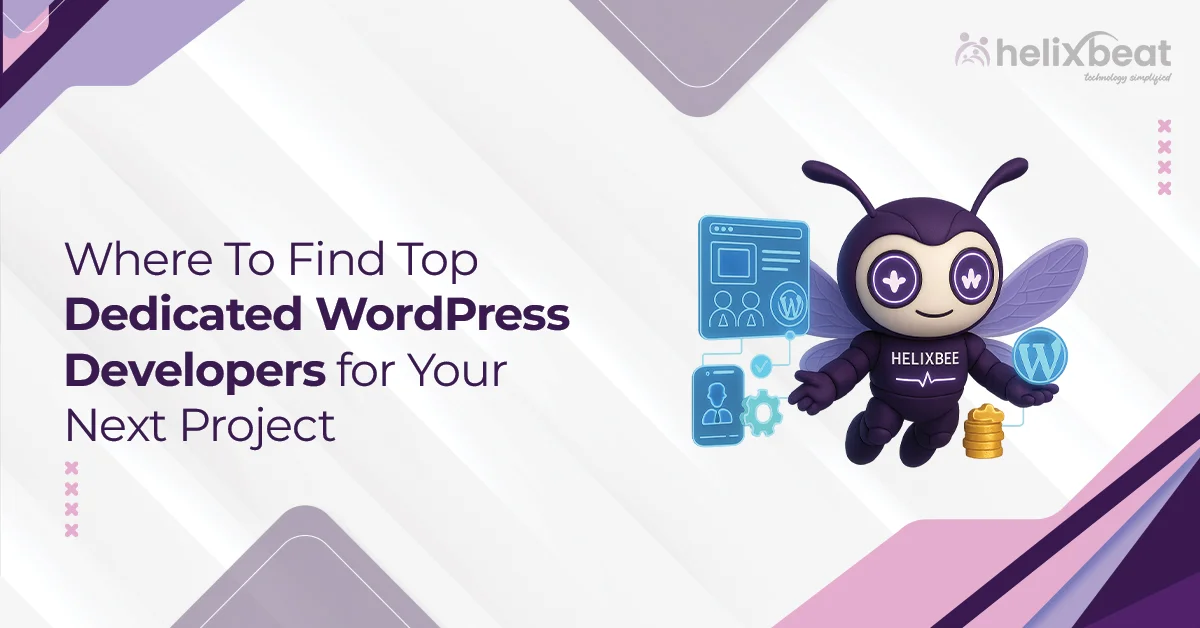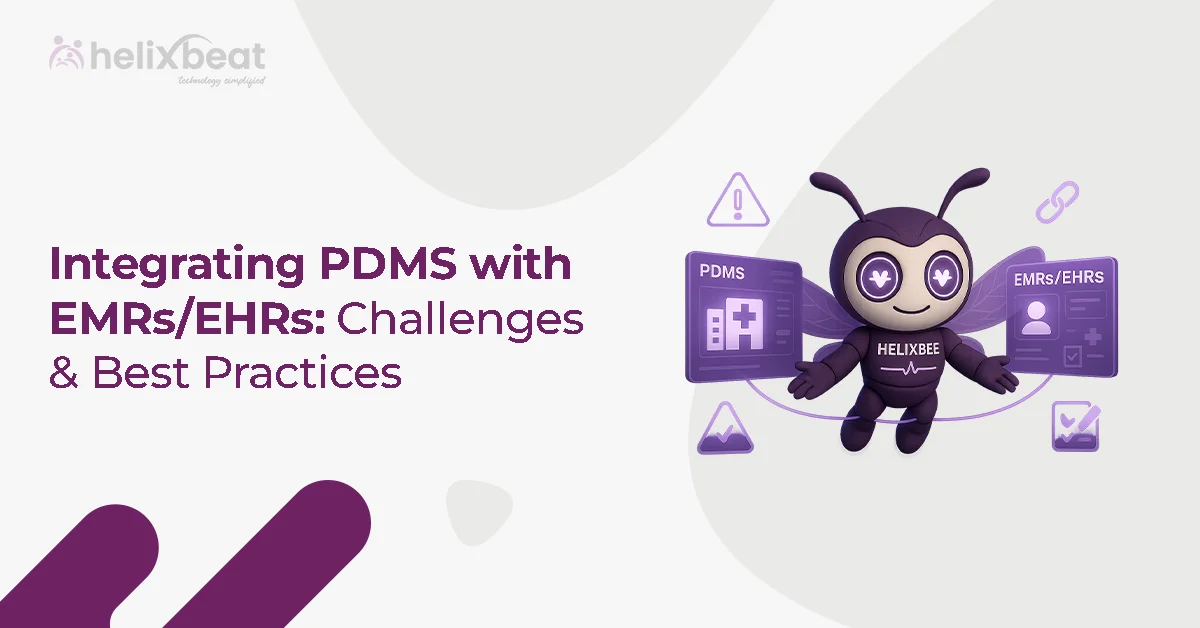These days, having an e-commerce app is essential for any business that wants to stay ahead. It’s not just about selling products online; it’s about making shopping easier and more convenient for your customers. With features like easy browsing, secure payments, and personalized recommendations, an e-commerce app helps businesses connect with customers and keep them coming back.
For business owners, creating an e-commerce app for Android and iOS is a great way to meet online shopping demand. Since so many people purchase online, having your app on Android and iOS allows you to reach a wider customer.
On the other hand, it offers a personalised shopping experience that your customers can enjoy anytime, anywhere. Whether you are a newbie or an experienced seller, an e-commerce app for Android and iOS is the right way to reach customers.
In this blog, you’ll learn more about e-commerce app development and how Helixbeat build e-commerce mobile apps for Android or iOS.

Table of Contents
What is E-commerce App Development?
E-commerce app development is the process of creating mobile apps that allow businesses to sell products or services through smartphones and tablets. These apps are especially designed to offer a seamless, fast, and personalized shopping
experience.
Developed for both Android and iOS, e-commerce app development companies help businesses reach a wider audience and enhance customer engagement. Basically, it’s about building an app that makes shopping convenient and enjoyable for customers, converting sales and improving business performance.
Types of E-commerce Applications
E-commerce app development comes in various models, each designed to serve different types of transactions and audiences. The four most common types are mentioned below:
1. B2B (Business-to-Business)
In a B2B model, businesses sell products or services to other businesses. These apps typically handle bulk orders, large transactions, and specialized pricing. They focus on creating long-term relationships between companies rather than one-time sales, making them ideal for industries like wholesale, manufacturing, and supply chain management.
2. B2C (Business-to-Consumer)
The B2C model is the most common and involves businesses selling directly to consumers. Apps in this category are designed for individual shoppers, offering features like easy browsing, secure payments, product recommendations, and fast checkout. Major e-commerce giants like Amazon and Walmart operate on a B2C model.
3. C2C (Consumer-to-Consumer)
In the C2C model, persons sell products or services to other individuals. Apps like eBay, Craigslist, and Poshmark are prime examples of this model, where users can list and sell items to other consumers. These platforms typically focus on creating a marketplace where users can interact, negotiate prices, and complete transactions.
4. C2B (Consumer-to-Business)
In a C2B model, consumers sell products or offer services to businesses. Examples include freelance platforms, stock photo sites, or review websites, where individuals offer their skills, products, or data to businesses. This model allows consumers to create value for businesses, often through digital goods or services.
An e-commerce mobile app development company can build these different types of e-commerce applications perfectly to meet your business goals.
Challenges in E-Commerce App Development
Developing an e-commerce app comes with several challenges that must be addressed for success. Here are the key challenges businesses face:
1. Operational Instability
Managing inventory, orders, and customer support across various channels can be complex. Any mismanagement can lead to delays, errors, or system crashes, affecting customer experience and business reputation.
2. Supply Chain Disruptions
Issues like product shortages or delivery delays can disrupt the flow of orders. Integration with supply chain management systems is essential to minimize these disruptions and maintain smooth operations.
3. Data and Privacy Risks
Protecting customer data is critical. E-commerce apps need to comply with data protection regulations and implement robust security measures to prevent data breaches and maintain customer trust.
4. Technological Advancements
As technology keeps growing, apps can quickly become outdated. Staying up to date with platform updates and new technologies is essential to provide a competitive, innovative experience.
In short, while e-commerce app development offers great potential, overcoming these challenges is key to building a successful, secure, and efficient app.
Why Building an E-commerce App is Necessary?
E-commerce app development is essential for businesses looking to stay competitive in today’s mobile-first world. Here’s why:
Reaches a Larger Audience
With more and more consumers shopping from their smartphones, having an e-commerce app ensures your business is accessible to a wider audience. Whether they’re using an Android or iOS device, customers can shop anytime, anywhere, which increases your potential for sales.
Enhanced User Experience
Unlike websites, e-commerce apps offer a faster, more streamlined shopping experience. Features like push notifications, easy checkout, and personalized recommendations make it easier for customers to find and buy what they need, improving overall customer satisfaction.
Better Customer Engagement
An e-commerce app allows you to engage with your customers directly through push notifications, updates on sales, discounts, and personalized offers. This keeps your brand at the forefront of your mind and encourages repeat business.
Increased Sales and Conversions
Apps make the shopping process more convenient, which often leads to higher conversion rates. With features like one-click purchasing, saved preferences, and secure payment options, customers are more likely to complete their purchases.
Competitive Advantage
In the digital world, having a mobile app is no longer just an option; it’s a necessity. If a business doesn’t have one, it could lose customers to competitors who make shopping easier and more convenient through their apps.
In short, building an e-commerce app is necessary to stay relevant, boost sales, and provide your customers with a seamless, personalized shopping experience that drives loyalty and growth.
5 Must-Have Features in Every E-commerce App
To create a successful e-commerce app, it’s essential to include key features that enhance user experience and drive sales. Here are five must-have features in e-commerce app development:
1. User-friendly Interface
A clean, easy-to-navigate design ensures customers can find products quickly, improving their overall shopping experience.
2. Product Catalog
A well-organized catalog with detailed product listings, images, and descriptions allows customers to make informed choices.
3. Secure Payment Gateway
Multiple secure payment options ensure a safe and flexible checkout experience, building customer trust.
4. Push Notifications
Timely updates on offers, sales, and promotions keep customers engaged and encourage repeat visits to the app.
5. Order Tracking
Real-time tracking updates give customers transparency and reduce inquiries, improving satisfaction.
Incorporating these features will enhance the shopping experience, boost customer loyalty, and help grow your e-commerce business.
Helixbeat’s Mobile App Development Process
Developing an e-commerce app involves several stages, each crucial to ensuring a smooth, functional, and user-friendly final product. In 2024, mobile apps generated over $935 billion in revenue, highlighting the importance of mobile commerce in today’s market. Type of processes are:
1. Planning and Research
The first step is understanding your business needs and defining clear goals for your app. This includes identifying your target audience, analyzing competitors, and deciding on key features and functionalities.
2. UI/UX Design
Design the app’s user interface (UI) and user experience (UX) to ensure it is easy to navigate and visually appealing. This step focuses on creating wireframes, prototypes, and final designs that enhance user interaction and satisfaction. The interesting part is well-designed user interface can increase conversion rates by up to 200%.
3. App Development
This is where the coding and backend development take place. The app is built using the chosen technology stack for both Android and iOS. Key features such as payment gateways, product catalogs, and user accounts are integrated during this phase.
Around worldwide mobile app market is expected to reach $756 billion by 2027, growing at a CAGR of 8.58%.
4. Testing
Before the app goes live, it undergoes through testing to identify bugs, glitches, or performance issues. This includes functionality testing, usability testing, security testing, and compatibility checks across different devices and operating systems. Apps that crash or have bugs can lose up to half of the users within the first week.
5. Launch
Once the app is fully developed and tested, it is launched on the Google Play Store and Apple App Store. Marketing strategies and campaigns are executed to drive downloads and generate initial user engagement.
Over 257 billion apps were downloaded globally in 2023, indicating the vast reach of mobile applications.
6. Maintenance and Updates
Post-launch, the app needs regular updates to fix bugs, introduce new features, and ensure compatibility with the latest mobile operating systems. Continuous monitoring and user feedback help improve the app’s performance and user experience.
By following these steps, businesses can ensure that their e-commerce app is well-built, secure, and ready to deliver an excellent shopping experience for their customers.
Conclusion
The demand for mobile apps in e-commerce is increasing, as more consumers turn to their smartphones for shopping. With the convenience of browsing, purchasing, and tracking orders right at their fingertips, mobile apps have become a crucial part of a successful e-commerce strategy.
Nowadays, businesses must ensure they offer a seamless, engaging, and secure shopping experience on both Android and iOS platforms.
This is where Helixbeat can help your E-commerce businesses. With expertise in e-commerce app development, Helixbeat designs and builds custom mobile apps tailored to your business needs.
Whether you’re targeting Android users, iOS users, or both, Helixbeat provides end-to-end solutions, ensuring your app is user-friendly, feature-rich, and optimized for growth.
By partnering with Helixbeat, you can create an app that enhances customer satisfaction, drives sales, and strengthens your brand in the competitive e-commerce space.
FAQ:
1. What is eCommerce app development?
eCommerce app development involves creating mobile apps that allow businesses to sell products online with features like shopping carts, payment gateways, and product catalogs.
2. Which software is best for eCommerce website development?
The best software depends on business needs. Shopify is great for small businesses, WooCommerce works well for WordPress users, Magento is ideal for large businesses, and BigCommerce is scalable for growth.
3. Which API is best for eCommerce website?
Stripe API and PayPal API are popular for payment processing, while Shopify API integrates stores with apps, and Google Maps API is useful for location services.
4. Which platform is good for eCommerce?
Shopify is ideal for small businesses, WooCommerce for WordPress users, Magento for larger businesses, and BigCommerce for scalability.
5. Which algorithm is used in eCommerce website?
ECommerce websites use recommendation algorithms for product suggestions, search algorithms for finding products, and pricing algorithms for dynamic pricing adjustments.
6. Which language is used for eCommerce website?
Common languages for eCommerce websites include HTML/CSS for design, JavaScript for dynamic content, PHP for backend, Python for custom systems, and Ruby for platforms like Shopify.



